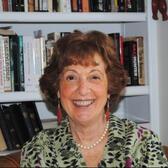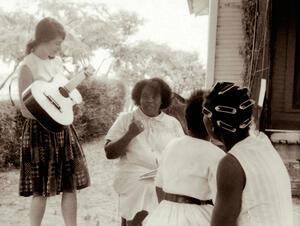Tikkun Olam in a Mississipi Freedom School
On February 1, 1960, four black students in Greensboro, North Carolina, sat down at a race-segregated lunch counter in Woolworth’s and asked for service. When the waitress refused to serve them, they remained seated. This act of passive resistance launched a mass Civil Rights Movement involving tens of thousands of black southerners demanding equality and an end to the hideous system of racial segregation. I was a vocal music teacher in junior high school in the Lower East Side of Manhattan then, and not that much older than these students. Their courage and dignity in the face of constant violence fired my heart and mind.
On August 28, 1963, I was one of 250,000 Americans who traveled to the national’s capital for the March on Washington for Jobs and Freedom. I was overwhelmed by the camaraderie of the day and by the eloquence not only of Dr. King but of Rabbi Joachim Prinz, who fled Nazi Germany and was then president of the American Jewish Congress. Two years later, in the summer of July 1965, when I was 26 years old, I travelled to McComb, Missippi to expose black children to activities and subjects not taught in their second-rate, race-segregated public schools.
Ours was not a religious Jewish family but a family where the Jewish values of learning, service, and social justice were paramount. I was keenly aware that anti-semitism was alive and well in the United States. I had gone to Brandeis University, a school set up to give Jewish youth the opportunity for a first-class education because, in the 1950s, quotas limited their admission to most American colleges and universities.
I also knew about my father’s personal experiences with anti-semitism. He changed his name from Meyer Rappaport to Ray Porter when he started out in the 1920s to become a vocal arranger. And he was only behind the scenes. I may be wrong, but except for the Marx Brothers, I can think of very few Jewish performers before the 1960s who didn’t change or “Americanize” their names so their American audiences would not be aware that they were Jewish. I heard stories of how my father didn’t get jobs writing jingles because of the entrenched prejudice against Jews at advertising agencies (a prejudice you can see dramatized in the hit TV series, “Mad Men.”) The parallels between racial segregation and anti-semitism were a frequent topic of conversation among my parents and their Jewish friends, especially those who were staunch Zionists.
When I got to Mississippi, I lived in a small, rented house in the black part of McComb with two other women—Freddie Green, a 17-year-old African American from Greenwood, Mississippi, and Karen Pate, a teacher from Klamath Falls, Oregon, a few years younger than me, who had been in Mississippi for over a year and was therefore considered a “veteran.” The three of us were very different women, from very different backgrounds, but we quickly became friends, united by purpose and by humor. I was teased mercilessly about my fear of the giant water bugs in our rented house—in fact, my farewell present from Freddie and Karen was a dead water bug in a frame, which I kept for many years.
We spent our mornings talking with kids, teaching them poetry, writing, sharing our experiences up North, listening to their experiences, etc. I had been teaching up North in schools in economically disadvantaged neighborhoods, but my students there at least had books in their libraries, and gyms and gym equipment, and outdoor playgrounds. The African American children in McComb’s segregated schools had so little; it was a constant painful reminder of how much better life was in New York City, despite educational inequalities and our own brand of northern racism.
To my students in McComb, I was Doreen—not Miss Rappaport. They knew I was not a southerner, and yet there was a restraint and concern about who I really was and whether they could trust me. Their parents’ experience with white people was negative and fraught with danger. The children were polite, more polite than my northern black students. They asked lots of questions about my life and my work. How old was I? What was my life up North like? How did I know so much? (I didn’t, but they thought I did.) I wore my long hair in a ponytail or braid, and many of the girls liked to touch it, to feel what it was like, to assume an intimacy with a white person that they would never have attempted before. I considered it an honor.
I decided that I had to empower these black children with their people’s history, that I had to research and write stories about them and their extraordinary ancestors. It became my mission to bring those stories into classrooms. With the emergence of the women’s movement, I realized that I needed to empower myself with stories about women and set out to research and write those stories, too. Within two years, I had left teaching to write multicultural history and stories for children.
And what a grand journey it was, learning history I had never been taught--finding poems, songs, sermons, interviews, and autobiographies written by African Americans. My writing journey eventually led me into the lives of other Americans—Hispanics, Native Americans, and women of various classes, religions, and races—to exploring Chinese and Madagascan folktales and legends, and in the past six years, to telling the story of Jewish resistance during the Holocaust.
It is not a coincidence that so many Jews went south or worked in the North to combat racial segregation and economic inequality. Long before the Holocaust, our parents and grandparents knew the pain, humiliation, and danger of being Jews and took pride in the Jewish tradition of Tikkun Olam, ("repairing the world" or "healing and restoring the world"). I was so happy to find JWA’s Living the Legacy curriculum on the role of Jews in the Civil Rights and Labor Movements because it reinforces, not only the commitment of American Jews to social justice but reminds all Americans, regardless of our backgrounds, of our responsibility to help “repair” the world.







